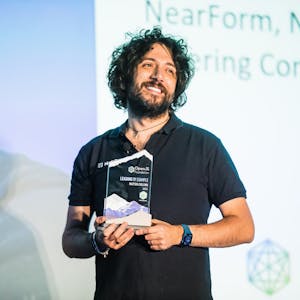So even just within the last month, I've started to play around with defer and some of my own apps because we had an early implementation at Apollo and I was realizing some of those things. And I was having this moment of like, oh my gosh, this is going to change how people build their front-end components. This is wild. I'm excited about GraphQL all over again. And so I'm really excited that we're entering this phase of defer, live queries, caching, what Tim is doing, all these other amazing things on top of GraphQL now that we've gotten past the basics of just making GraphQL available to the masses.
What do you think would be the biggest conceptual thing that people can now do with defer? The biggest a-ha moment for you when you started playing with this? So my a-ha moment, we have a big front-end app at Apollo called Studio and every time we load a list of things, we have one query for the list and then one query for every component of the list so that the list can show up, but then the metadata on that list can load more progressively. And so when you just load one page, it's maybe like 100 queries, which is just so many. And so I had this a-ha moment of like, oh my gosh, with defer, this no longer needs to be organized this way, this can all just be one query, it's going to be so much better for the front-end developers who no longer have to break this component up on these boundaries, it's going to be so much better for the server that no longer has to deal with mega load. So even just that it was such a simple moment, but I was like, the potential here is so exciting.
Yeah, I agree. And you also mentioned live queries. And I know that GraphVis has started playing a bit with those things. Maybe you can take the question from your perspective, Frederick. What are the most exciting upcoming things for you? Absolutely. I mean, I think just to double click on GraphQL, where we are, I think the fact that it's becoming a bit boring is a good thing, right? It's no longer being hotly debated. It's here, and it's here to stay. And I'm pretty excited about that. Now, we're refining and adding things to make it easy for anyone to adopt and to generalize common patterns. So I like that. But yeah, on our end, we're also looking at defer and stream, and we actually have experimental support for live queries already. And most people, I think, know of GraphQL subscriptions, but not everyone knows about live queries. So that's another example of just making real-time really easy. And that's obviously something that we care deeply about because we care deeply about because we want to make GraphQL servers easier. Because I think the kind of common knowledge, at least in my experience, has been building GraphQL services is a bit hard and fragmented. So that's something we're excited to make better.

























Comments